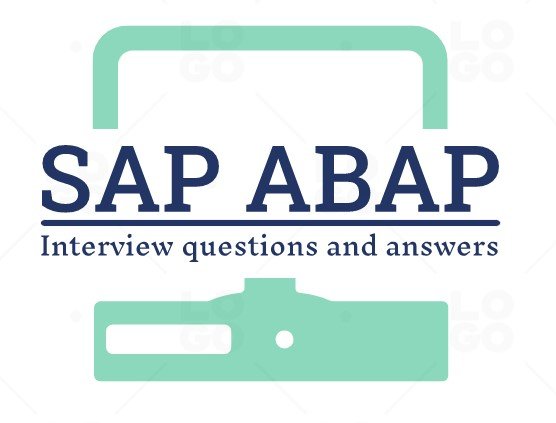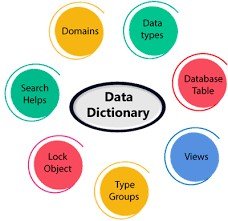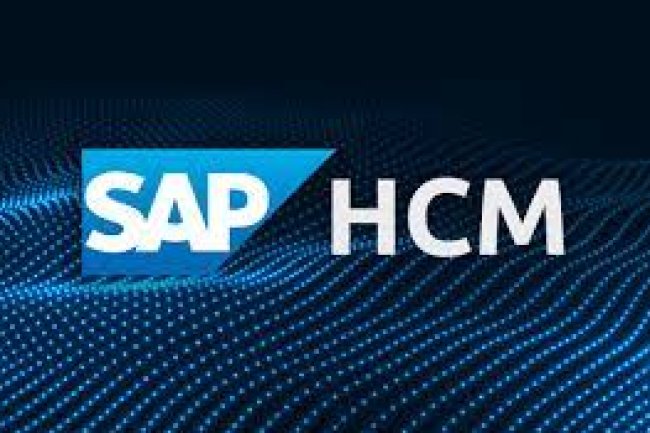Top 50 SAP ABAP Interview Questions & Answer
Top 50 SAP ABAP Interview Questions & Answer for MNCs, Best SAP ABAP Interview Question and Answer for fresher and Experience also.

Introduction
Hi SAP Lovers, I am very excited to give you the Top 50 SAP ABAP Interview Questions & Answers. If you are really seriously searching for a job in SAP implemented IT Firms. I researched and collected from different SAP experts in preparing the most regularly asked top 50 SAP ABAP interviews and discussed questions and answers. If you are just raw or a master in SAP ABAP, then this Question/Answer format transforms you into a Confident professional SAP ABAP Developer. So ALL THE BEST. Let’s Go Ahead!

Top 50 SAP ABAP Interview Questions & Answers
Q1. What exactly is SAP ABAP?
Ans. SAP is a kind of software, most often called Enterprise Resource Planning (ERP). It is implemented and applied by major data processing organizations. To supervise their day-to-day operations. The phrase ABAP denotes Advanced Business Application Programming. Similarly, it represents a coding language for Systems, Applications & Products in Data Processing (SAP).
It is meant for refining RICEFW (Reports, Interfaces, Extensions, Forms, and Workflows) objects. Moreover, It is a fourth generation programming language utilized to produce an application for the SAP R/3 structure. Therefore , these applications are employed in SAP that have been written by using ABAP/4.
To be an expert in SAP ABAP interview questions, get qualified by enrolling in Henry Harvin SAP ABAP Course!
Q2. Can you tell us about the several ABAP editors?
Ans. SE38 and SE80 are 2 recognizable ABAP editors, with SE38 being used to generate the program. Similarly, it is used to obtain online records, besides giving aid to the progress of all units relating to this editor.
Q3. Can you tell us about the ABAP editor’s Applications?
Ans. SE80 aids accessory attributes like function groups, constructing packages, unit pools, projects, and categories.
Q4. What are the data classes used in ABAP?
Ans. In ABAP programming, data grades are used; accordingly, data kinds such as:
- Transaction data is the data that transforms often.
- Data that can change gradually is called master data.
- System data: This is data that the R/3 system needs for itself.
- Organization data: This is the data that is fed into the system when it is put together and then replaced over time.
Q5. How can we acquire the ABAP Web Dynpro workbench?
Ans. In ABAP workbench, you should apply Transaction code: SE80 to access WD or Web Dynpro graphical tools or runtime domain.
Q6. Tell us about the name of its object list and component in ABAP Web Dynpro workbench?
Ans. The list of objects that you should use:
- View
- Dynpro Component
- Interface
- Controller
- Web Dynpro application
Q7. What are the advantages of employing Web Dynpro?
Ans. There are many advantages of employing web Dynpro like;
- It provides simple structural changes.
- It provides simple transforming of layout and map-reading with graphical tools.
- It provides simple unification in the ABAP domain.
- It presents perfect persistence and refusing components for expansion.
- It gives electronic data transport with the work of data binding.
Q8. Can you define the ABAP data dictionary?
Ans. ABAP is employed in implementation development to identify the logical structure of the objects. Furthermore, it is utilized to disclose the significant relational database in tables.
To be an expert in SAP ABAP interview questions get qualified by enrolling in the Henry Harvin SAP ABAP Course!
Q9. Can you define the MVC programming model in Web Dynpro?
Ans. Web Dynpro applications depend on the Model View Controller (MVC) model, whereas
Model: That is used in web Dynpro applications to recover back-end details.
View: That is used in web browsers to exhibit data depictions.
Controller: A controller is meant to command information exchange connecting the model and the view, where the control system appears to take entries from the user and mould information from the database before exhibiting it in the browser.
Q10. Can you explain about ABAP data classes?
Ans. WD applications are dependent upon on MVC model, whereas;
Model: It is operated to retrieve the back-end data in a WD application.
View: It is employed to provide the representation of data in a web browser.
Controller: Controller is used to controlling communication between the model and view wherein the controller takes input from users and takes the proceeding data from the model and exhibits it in the browser.
Q11. Mention the difference between pool tables and transparent tables?
Ans. Transparent tables were those that have an interrelated relationship with the database tables. Its plan is based on a single database.
Pooled tables: The tables that have only a single connection with the tables in the database and are saved at the database level.
Q 12. Can you explain BDC programming?
Ans. Batch Data Communications (BDC) is a procedure to shift external data into the SAP system. You can work on a sequence file as the main component to shift that acquires the data via batch category or programs that are associated to sessions.
Q 13. Can you brief us about foreign key relationships in SAP ABAP?
Ans. Foreign keys are required to provide the steadiness of data. These are required to identify the association between the tables in the ABAP data storage. Moreover, these keys are required to build merit checks for the entry fields. Moreover, data registered in it must be examined counter to the preceding data to assure that there is no contradiction. In case it so happens, then it must be interpreted in the foreign key relation. Not only to create foreign keys but also to implement the SE11 SAP transaction code.
Q 14. What do you mean by internal tables?
Ans. When a program is performed, only then internal tables can appear. These can only be applied to a subset of database tables to execute table calculations. These can also reorganize the content of the database tables; accordingly, the needs of the users.
Q 15. Can you tell us which functional modules are used in sequence in BDC?
Ans: Uniquely, three functional modules are used in the order in BDC to construct the data transport flawlessly. These are:
BDC_INSERT
BDC_OPEN_GROUP
BDC_CLOSE_GROUP
Q 16. What are Smart Forms in SAP ABAP?
Ans. SAP ABAP Smart Forms are employed to initiate and preserve forms in case of mass printing in SAP Structure by using a graphical design aid. The output medium that is used in SAP smart forms is a fax, printer, e-mail, etc. Considerately, Smart forms were launched in 1998 to overpower the blocks of SAP scripts.
Q 17. Can you mention a few components of SAP scripts?
Ans. We can see SAP scripts present in SAP ABAP which are meant for word processing tools. The purpose for these is to operate similarly to a layout set. Apart from this, it has paragraph patterns, windows, sheets, character formats, etc.
Q 18. Can you elaborate on the difference between table and structure in the data dictionary in SAP ABAP?
Ans. The key variation among table and structure in SAP ABAP are listed below:
One can stock the data physically in the tables, the same is not feasible in the structure. Meanwhile one can maintain the technical features in the tables. Nevertheless, it is not achievable in structure. Apart from the above, the structure does not have a Primary key, while tables have.
Q 19. Can you say the significant difference between an SAP ABAP Template and an SAP ABAP Table?
Ans. One can find the table to be dynamic, meanwhile, the template is fixed in SAP ABAP.
Q 20. Can you tell us how the data should be formatted before writing a statement in the SAP ABAP report?
Ans. The loop event can be considered an assistant, to create report output with the following:
.at new
.at first
.at l
Q 21. Define the difference between ABAP and OOABAP? When does OOABAP come into play?
Ans. When there arises a requirement to generate traditional programs in R/3, then ABAP is employed while creating BSP/PCUI applications, OOABAP is employed.
Q 22. Can you clarify about ALV coding in SAP ABAP and How can one relate this grid to it?
Ans. Application List Viewer or ALV is used to refine the outcome of the report. SAP identifies a chamber of AVL possibilities of each report outcome for incorporation of readability or functionality of the report outcome.
Q 23. Can you explain how End-of-selection can be used in particular to SAP ABAP?
Ans. One can write HR-ABAP code in SAP ABAP , by employing the end of the selection event. Besides, HR-ABAP code utilizes the information to analyze and at the beginning of the selection event it gets printed on the lineup. In addition to this, each item will be concluded at the selection event.
Q 24. Can you tell the distinction between ‘Type’ and ‘Like’?
Ans. Type is related to the existing data type but Like is related to the existing data object. Likewise, when a data type is straightaway allocated to the data object while claiming, it signifies TYPE, However, when a data type is applied to some other object while claiming a data object, it means ‘LIKE.’ Here, Type cites current data type, while Like cites the live data object.
Q 25. What do you mean by table buffer?
Ans. Table Buffering in SAP ABAP is a theory in ABAP Tables to develop performance from 10 to 100 times and shorten the time of processing (accessing) the table. A Buffer is a connection between the Database layer and the Application layer.
Q 26. Which type of tables is used in this buffer?
Ans. Pool tables and transparent tables are utilized in the buffer. Besides, the cluster tables cannot be buffered or altered.
Q27. Can you explain in detail how information can be stored in a cluster table?
Ans. A cluster table could actually stock information with the assistance of different DDIC tables. It is meant to save data like a name-value pair.
To be an expert in SAP ABAP interview questions, get qualified by enrolling in Henry Harvin SAP ABAP Course!
Q 28. Can you elaborate on what different scenarios one can use, to create interactive forms in Web Dynpro in SAP ABAP?
Ans. There are actually four feasible options in that one can operate Web Dynpro in SAP ABAP to generate dynamic forms:
Offline Scenario Printing Scenario employing a Digital Signature in an Interactive Scenario
Q 29 . Can you tell us how can messages be used in Web Dynpro in SAP ABAP?
Ans. Messages carrying data for Dynpro software end users can be generated and disclosed in ABAP Workbench. Correspondingly, these alerts are visible on the screen. Moreover, these are actually user-friendly emails that exhibit valuable messages and information effectively about web Dynpro implementation.
Q30. Can you mention in detail various database Integrities?
Ans.
- Integrity of Value Set
- Integrity of Semantics
- Integrity is the primary key.
- The integrity of Foreign Keys
- Integrity in Relationships
- Integrity in Operations
Q 31. Can you brief us on the two methods of altering SAP standard tables?
Ans. You can find two methods that can transform SAP standard tables that are Append structures and Customization.
Q 32. Can you brief us on the several types of parameters? And What differentiates them from further types of parameters?
Ans. We can find two types of parameters i.e one is formal parameters and the other is actual parameters. Formal parameters are employed to explain a subroutine while using the ‘form’ statement, however, actual parameters are employed to define a subroutine’s term while using the ‘perform’ statement.
The attributes of the other sorts of parameters can be employed to differentiate them. If you want to move information from a subprogram, you need to use output values; if you want to pass information to a subprogram, you need to use input data.
Q 33.Can you explain the distinct types of data dictionary objects?
Ans. Tables, Domain, Views, Type Groups, Data Element, Lock Objects, Structures, Table Types, and Search aids are the right responses.
Q 34. Can you explain how information can be stored in a cluster table?
Ans. A cluster table can truly store information with the support of different DDIC tables. Moreover, it is meant for saving data such as a name-value pair.
Q 35.Can you explain the use of ‘pretty-printer’?
Ans. The pretty-printer is employed in SAP ABAP to pattern the ABAP code.
Q 36. Can you explain how a script form can be debugged?
Ans. To remove the errors from the script form in SAP ABAP, you should do the following:
SE71 – name the form – utilities – start the debugger
To be an expert in SAP ABAP interview questions, get qualified by enrolling in Henry Harvin SAP ABAP Course!
Q 37. Can you explain the by group by the select statement?
Ans. When you want to withdraw data from a table based on a particular field group of Clause, we employ the select statement.
Q 38. Can you tell us the difference between a report and dialogue program?
Ans. A dialogue is a sort of module pool program, however a report is a sort of attainable program. This can only be implemented with a transaction. Moreover, dialogue programming can be employed when screen assimilation is needed.
Q 39. Can you brief us on what precisely is a SAP dispatcher?
Ans. A SAP dispatcher is actually a sort of control representative. Besides being employed to manage R/3 application resources.
Q 40. Can you elaborate on what is the variability between a database index and a match code?
Ans. A database index accommodates fields from one table.
The fields in the match code draw from many tables. Moverore, match code objects can be constructed on translucent tables, cluster tables, and pooled tables.
Q 41. Can you tell us about the benefits of employing the modularization technique?
Ans. The modular construction technique can be implemented to avert replication, in a particular case , a program that holds the similar order of code. Modularizing ABAP/4 programs builds them painlessly and not difficult to read, at the same time developing structure.Moreover, these programs are easy to upgrade.
Q 42. Can you tell us how callable elements of program code can be generated within a single ABAP/4 program?
Ans. It can either be done by generating programs in the database inventory or by recognizing macros.

Q 43. Can you give details on the usage of inbound and outbound Dynpro plugin components?
Ans. The Dynpro components are called the view controller components which relate to the inbound and outbound plugs. Here, the inbound plugins set down the beginning point of view. In contrast , the outbound plug relates to the succeeding view to requires, be called.
Q 44. Can you explain in detail how you utilize the window in the development of a Web Dynpro application?
Ans. There is a possibility in Web Dynpro, that windows are utilized for view sets or multiple views. Along with this, when a view merges in the other view, it is feasible to present it. Apart from this, a window consistently carries one or many views that can be approached via map-reading links.
With the help of the tools menu only, one can easily open a data dictionary in the SAP menu tree after opening SAP GUI. In the Tools menu, click the ABAP workbench and after that the advancement folder, in which the ABAP dictionary is found. Rather use the transaction code SE11.
Q 45. Can you tell us the data dictionary object to be used to create a transparent table?
Ans. Database table
Q 46. How can one avoid writing duplicate statements unlike saving time?
Ans. One needs to implement the concept of chaining statements.
Q 47. What do you mean by SAP ABAP’s three-tier architecture?
Ans. With the assistance of the presentation layer of the SAP ABAP, it is feasible to incorporate an input tool. In fact, this presentation layer helps in managing the SAP system. The presentation can possibly be a web browser or a mobile phone. This affair can be transferred with the help of the application server.
In the other server, the database layer is positioned, in which the application server interfaces to this layer for security reasons. Furthermore, with the system, all the layers interact among the system in total.
Q 48. Can you brief us on the intention of inserting and appending statements in SAP ABAP?
Ans. The internal table is used to record the particular work area when the Append statement is employed to attach this record. Furthermore, a record at a certain place can be attached with the aid of the insert statement.
Q49. Can you tell us the types of events that are related to screen programming?
Ans. There are four events associated to screen programming, they are:
- Process after Input or PAI: This event is implemented during the interactivity of operators while the screen executes.
- A process on Help or POH: This event gets implemented on appeal by the users only after clicking the key F1.
- Following this, the program accepts codes in several event blocks, where the screen is processed by the system.
- Process Before Output or PBO: This event performs long-only before it exhibits on the screen.
- Process On Value or POV: This event performs just by pressing F4 by operators.
Q 50. Can you explain the several sections of Technical Specifications?
Ans. In technical specifications, five contents are available, including:
Buffering permission, data class, size category, buffering type, and login are all variables to consider.
Five contents are accessible in technical specifications they are:
Buffering permission, data class, size category, buffering type, and log in.
All the above Top 50 interview Questions and Answers are apt and appropriate to get success in your SAP ABAP interview. These are precise which helps you to speak confidently in your interview.
Study well with confidence just before attending the interview.
GOOD LUCK!
SAP ABAP (Advanced Business Application Programming) is a high-level Programming Language. This course is recognised by the government of India. Furthermore, certified by ISO 29990:2010 and won many awards stating it is the best institute.
Why Learn SAP ABAP COURSE

ABAP (Advanced Business Application Programming) is considered as the high-level fourth generation language implemented for the progress of SAP software. In addition to this is also the extensively applied programming language to improve applications on the SAP program, for big business and financial organizations. The SAP ABAP Course elaborates on how do you progress more efficiently with the given applications and assists you in shaping your career as a SAP ABAP programmer.
Components of ABAP:
- ABAP Dictionary
- ABAP Editor
- Repository Browser
- Screen Painter
- Repository Information System
- Test and Analysis Tools
- Function Builder
- Data Modeler
- Workbench Organizer
Conclusion:
SAP ABAP is a great option to begin your profession as SAP ABAP programmer or consultant. As of now there exists a huge demand for SAP qualified candidates. There is increasing demand for SAP ABAP in all Business Applications to supervise the day-to-day operations. You can now customize fund flows in finance, materials, assets and the entire modules of SAP. In addition, it permits you to generate custom reports and interfaces. However, ABAP seems quite simple for programmers but it is not considered the right option for non-programmers.
SAP ABAP qualified candidates are in great demand in the job market.
Recommended Reads:
- 10 Best SAP Training Institutes in India
- Top 15 SAP FICO Courses in Hyderabad with SAP Jobs for Freshers
- Top 35 SAP FICO Interview Questions and Answers
- 15 Best SAP HR Courses In India
- Best 10 SAP Training Institutes in Delhi
FAQs
Q1.What are the basic concepts you should know before learning SAP ABAP?
You must have basic knowledge and an interest in programming. SAP ABAP is a programming language. If you know the basics in Structured Query Language(SQL), it will be an added advantage, as SAP ABAP consists of database queries. Even though you are not familiar with any programming language, you can still learn through institutes like Henry Harvin SAP ABAP COURSE.
Q2. Is there any particular educational qualification to learn SAP ABAP?
Absolutely, there is no need to have a particular educational qualification to learn ABAP – any qualified person can learn ABAP.
Q3. How long will someone take to learn ABAP?
This depends on how fast you grasp things and master the subject. Here, hands-on experience in SQL programming is a great benefit. Still, you may take a month or few weeks to get the basics of SAP ABAP, again depending on several factors.
Q4.What is the advantage of acquiring skills in SAP ABAP?
Getting skilled in SAP ABAP makes you master the standard code written by SAP for the organizations. You can either write a specific code for your client or else alter the present code using the progressive framework.
Q5. Is it necessary or a must to get SAP certified?
Yes, it is a must, as many MNCs recruit based on your certificates.
Best Regard
Moni Tripathi
Content Writer Expert , India
What's Your Reaction?












![Top SAP Modules list in 2023 [SAP FI, SAP CO, SAP SD, SAP HCM, and More]](https://sapmantra.com/blog/uploads/images/202304/image_100x75_6443f437cc02a.jpg)







